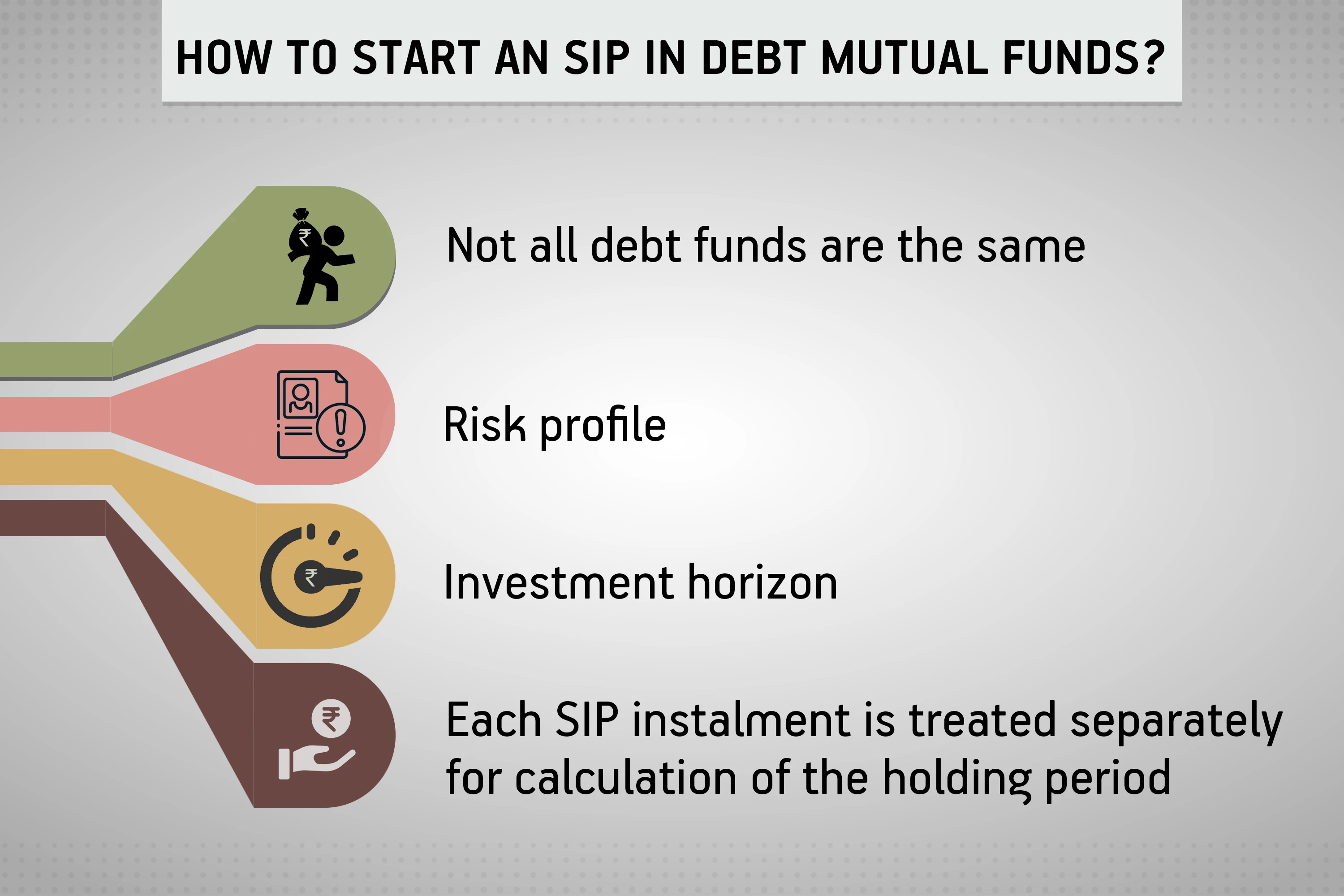-
Our Products
Our FundsFocus Funds
-
Self Care
Self-ServiceFind InformationWays To TransactPartner Solutions
-
Downloads
- Learnings
- About Us
-
More
-
Shareholders
-
Shareholders
-
Updates
-
-
SIP Calculators
- Back
-
Shareholders
How to start an SIP in debt mutual funds?
Aug 04, 2022
4 Min
4 Rating
SIP or Systematic Investment Plan is a simple and convenient way to invest in mutual funds.
Typically, investors invest in equity funds through SIP. However, SIP is not just for equity funds; you can also invest in debt funds through SIP.
Also Read - SIP Full Form
Debt mutual funds are a type of mutual fund that invests in debt securities such as treasury bills, commercial papers and corporate bonds. SIPs are easy to start. And, after setting up the SIP, you can forget about making new transactions.
Before investing in debt funds through SIP, it is essential to understand the aim behind in-vesting in debt funds. Debt mutual funds are best suited for those not looking to make huge profits in a short period. It is an ideal investment option for investors who want to invest to achieve their short to medium term or want to diversify their portfolio.
Things to know before investing in debt mutual funds through SIP
Not all debt funds are the same
There are different types of debt funds, and it is classified according to the categories of debt securities they invest in and the maturity period of those securities.
Bonds issued by corporations, banks, and the government, debentures issued by large cor-porations, and money market instruments such as commercial papers and certificates of deposits (CDs) issued by banks are all examples of debt securities. And debt funds are classi-fied as per the underlying instruments.Risk profile
Debt funds invest in different types of debt securities. And the risk associated with these debt securities also varies. For instance, credit risk funds carry higher credit risk than gilt funds. It is because credit risk funds primarily invest in corporate papers that are rated be-low AAA. AAA is the highest credit rating given by credit agencies. On the other hand, gilt funds invest in government securities.
So, it is essential to align the underlying risk of the debt fund investments with your risk pro-file.Investment horizon
In addition to the risk profile, it is vital to ensure that your investment horizon matches the debt funds’ underlying maturity profile before investing in a debt fund through SIP.
For instance, liquid funds, a type of debt mutual fund, are ideal options to park money for a few months to take care of emergencies or when you aren’t sure what to do with the mon-ey. Short term debt funds that invest in debt securities that mature within one year to three years can be a great investment option for short to medium financial goals that you want to achieve within three years.Each SIP instalment is treated separately for calculation of the holding period
You must pay capital gains tax when you redeem your debt mutual fund investments. How-ever, the debt fund taxation depends on the holding period. Gains on investments with a holding period of under three years are considered as Short Term Capital Gains (STCG) and Long Term Capital Gains (LTCG) if the investment period exceeds three years.
Also Read - How to Invest in SIP?
However, it is crucial to understand that each SIP instalment is considered a new investment for calculating the holding period. For instance, if you start a monthly SIP in debt fund in January 2022 and are planning to redeem your entire investments in March 2025. In this case, the holding period of units allotted in January and February 2022 will be considered long-term, and the LTCG tax of 20% after indexation will apply to these units. For the rest of the units, the gains will be added to your income and taxed as per your income slab.
Conclusion
Whether it is debt mutual funds or equity funds, SIP plays a vital role as an investment facili-ty and in achieving financial goals. In this article, we have discussed the various aspects of how to start an SIP in debt mutual funds and other related aspects.
Mutual Fund investments are subject to market risks, read all scheme related documents carefully.





 1800-270-7000
1800-270-7000




